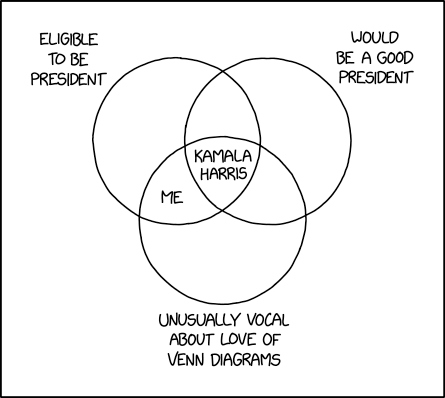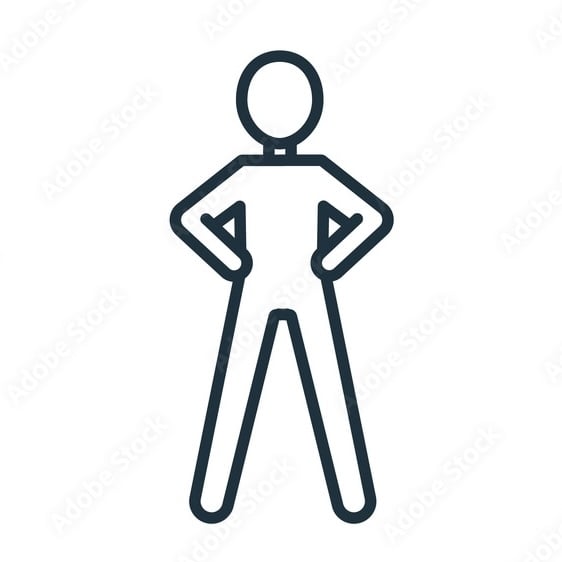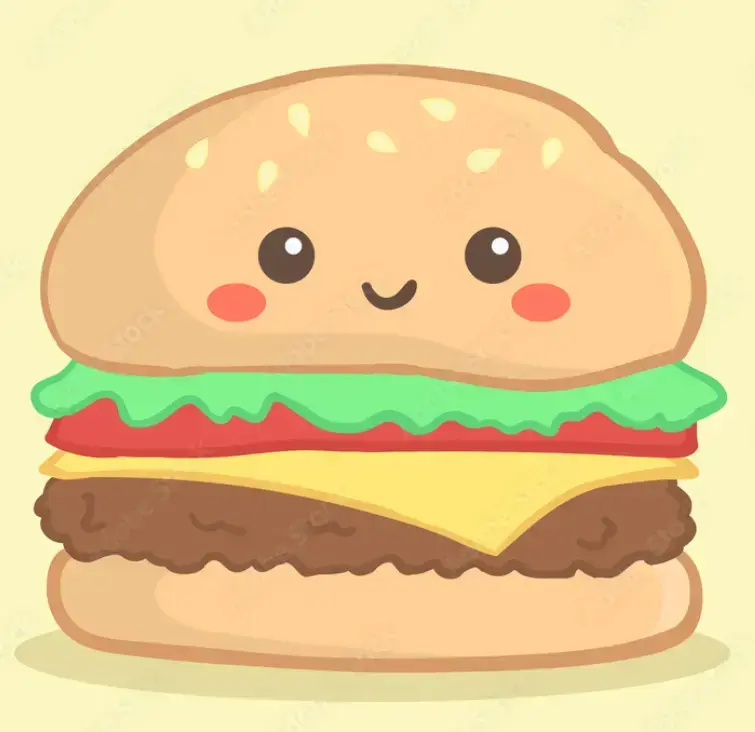Source (restricted to non-HBO-Max regions)
Kamala Harris is known to love Venn diagrams and would be cringing hard at this.
For reference, circles in Venn (Euler) diagrams are sets of objects with a certain property. Select objects are shown inside or outside of each circle depending on whether they belong to the set.
A good example is xkcd 2962:

Can someone explain what part he’s incorrect about? (Since we’re in ConfidentlyIncorrect)
The kamabla in the middle suggests that both kama and bla have kamabla in it, since that’s what they have in common. But kama doesn’t have bla, and bla doesn’t have kama. So they should not overlap. Hope that makes sense.
Which part of the tweet did you think was right?

It’s certainly not very useful or informative.
But please explain how it is incorrect.
Well for starters Kamabla is not actually at the intersection of Kama and Bla…

You have two strings and in the overlap you have the concatenated string formed from the parts. Again, not useful but a totally valid interpretation.
So … can you actually explain why you think it is incorrect or is snarky comments all you got?
That picture does not make it clear that the labels refer to regions, not elements. A clearer explanation of set operators is the following:

- B (Set B)
- A ∪ B (Union of A and B)
- A (Set A)
- A \ B (A minus B; notation varies)
- B \ A (B minus A)
- A ∩ B (Intersection of A and B)
This article on Intersection might help you understand
Here are the basics, though:
The intersection of
and
is the set
of elements that lie in both set
and set
I’m not saying either is good use of Venn diagrams (as opposed to the provided xkcd comic). A better “mathematical” way to express the relation is simply “KAMA + BLA = KAMABLA” (yes, the mathematical sign “+” is not used for concatenation in math but you get the point).
The tweet would work if we assume:
- Left set A contains words that include “KAMA”, notably “KAMA” itself
- Right set B contains words that include “BLA”, notably “BLA” itself
- Their intersection A ∩ B contains words that belong to both sets, notably “KAMABLA”.
Is it a technically correct Venn diagram? I’d say it could be, given the above weird assumptions.
Is a Venn diagram the correct tool for the job? No.As for JO’s example with sea creatures: if we assume
- A is a set of dolphins
- B is a set of sharks
- their intersection is an empty set: A ∩ B = { } because no dolphins are sharks
JO’s example might work if
- A was a set of properties of dolphins
- B was a set of properties of sharks
- their intersection includes “lives in the ocean”: A ∩ B = {“lives in the ocean”, …} because “lives in the ocean” is both a property of dolphins and a property of sharks
However, this essentially turns around the convention “sets are defined by properties and include objects” to “sets are defined by objects and include their properties”, which is in my opinion even more cringey than considering “words containing ‘BLA’” a notable set. (From a mathematical standpoint. The entire “Kamabla” thing is pure cringe in the practical sense.)
A correct Venn diagram of “KAMA” and “BLA” would have only “A” in the middle, because that is the only part that is present in both.
can’t we just enjoy an absurdist joke here
If you talk fast enough and are self deprecating its funny.
He has a live audience so he (and the writing team) knows what’s funny, and limits self-deprecation to about twice per episode. The show mostly features more conventional joke material (references to pop culture, defying expectations, reframing events in surprising context).
Its even funnier when you explain it.
This guy has a very punchable face and is insufferable. I don’t understand how he is so popular.
The funny thing about this statement is that it’s something John would say about himself
The funny thing about this statement is that it’s something John would say about himself
It turns out funny news with lots of bias is a winning combination
But he is not funny…
Other Team Bad is objectively hilarious, you are incorrect
What if I’m in neither teams? I’m European.




